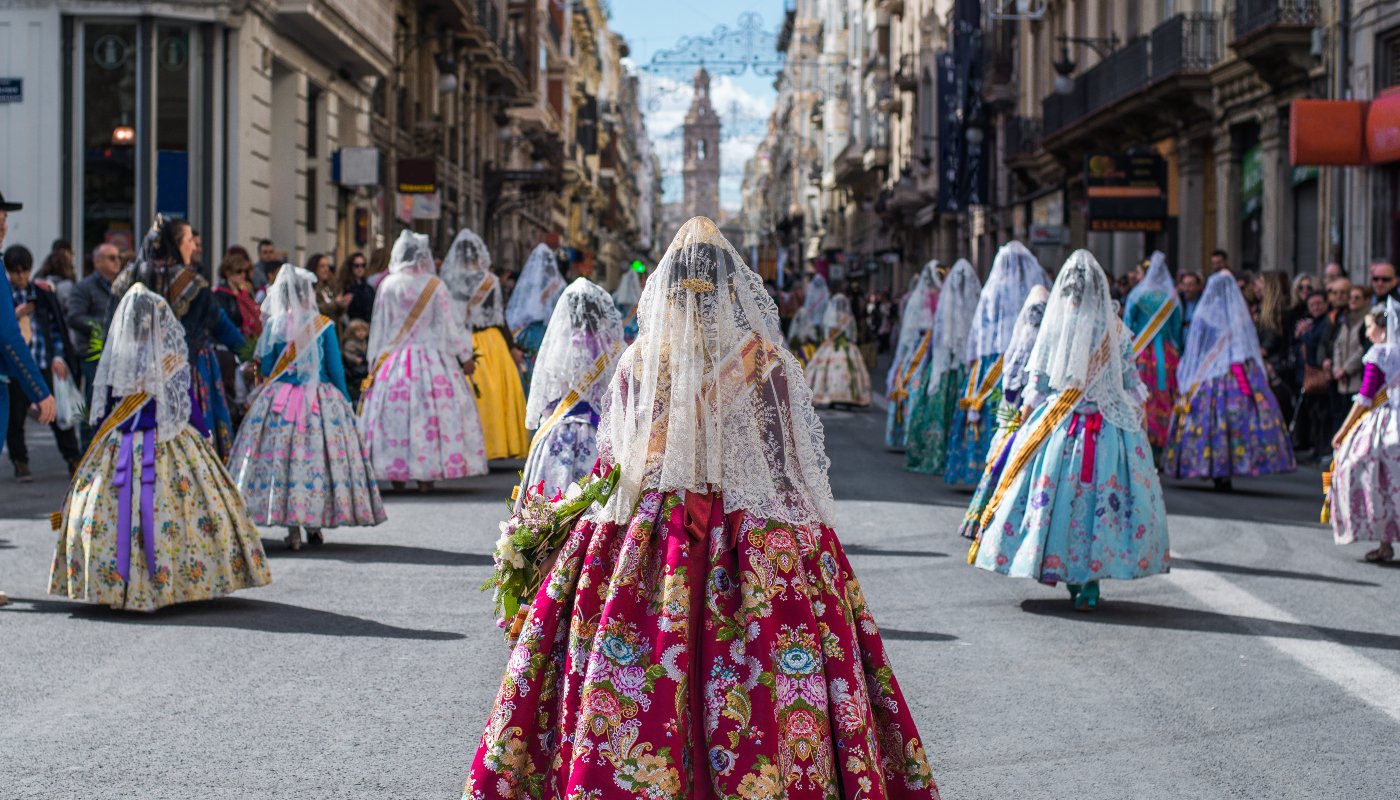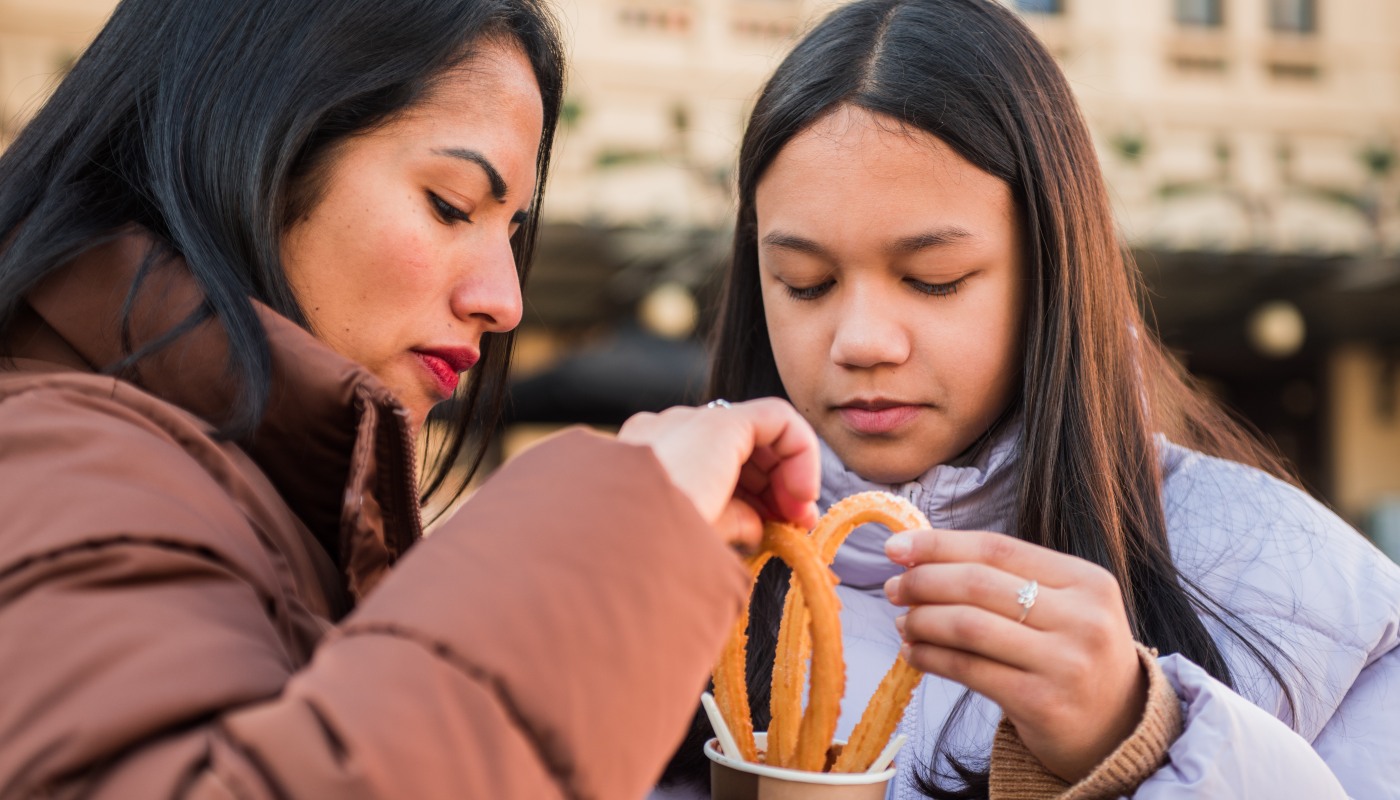Flavours of Valencia’s Fallas
Discover the magic of Valencia’s Fallas. Find out all about this festival and immerse yourself in the authentic Valencian essence.
TRAVELLING WITH TASTE
Share

What is Valencia’s Fallas?
In March, Valencia is immersed in its acclaimed Fallas festival, now a World Heritage attraction. It’s a festival that unites Valencians and attracts people not only from the peninsula but from all over the world. Gunpowder, music, gastronomy and tradition surround the true protagonists of this festival, the artistic monuments made of cardboard, wood and cork erected in the streets, carrying on this deep-rooted Valencian tradition.
What is the origin of Valencia’s Fallas?
The origins of this festival go back several centuries, to the ancient tradition of the city's carpenters who, on the eve of the feast of their patron saint, St. Joseph, burned old and unusable wooden junk in the streets and public squares. Over time, this tradition evolved and became charged with a critical and satirical nature. The Fallas constructions began to show scenes that reproduced social events and social criticism, always with humour. Later on, this led to a competition between these constructions with prizes being awarded, which gave rise to the birth of the artistic fallas.
The Fallas has acquired the magnitude of a major festival and become a major tourist attraction. Currently, the festival is made up of different events such as the Ninot Exhibition, the Plantà, the Cavalcade of the Kingdom and the Nit del Foc or Cremà, among others.

Typical dishes in Valencia during the Fallas
The passion of the Valencians for their festival fills the Fallas week with a thousand and one events featuring traditional music, huge amounts of gunpowder, exciting religious performances and the traditional, and almost sacred, paella in many streets. In the light of the streets, the Fallas go hand in hand with the gastronomy that is deeply rooted in these festivities.
- Valencian Paella: It’s the queen par excellence of Valencia's gastronomy and, during the Fallas, it’s a must. At midday, it’s typical to enjoy a plate of paella with friends and family. It’s also the undisputed protagonist in the casales falleros, where it’s not at all unusual for mythical competitions to be held for the best production of this traditional Valencian dish.
- Fideuá: The alternative to the iconic rice dish. This fish and seafood recipe is a must during the festive season. Unlike paella, it’s made with curved and thicker noodles than usual, which are cooked in the broth until they are dry.
- Allipebre: Sticking with seafood recipes, another emblematic dish of the Fallas gastronomy, typical of the Albufera area, is the eel allipebre. Served with bread and in earthenware pots to keep it warm, allipebre is a dish cooked with humble yet delicious ingredients. The main ingredients are of course the eels, which are cooked with potatoes, garlic and paprika. It’s a very traditional dish of ‘la terreta’ area.
- Horchata: The Fallas are also a great time to discover a white drink made from Valencian tiger nuts, water and sugar, which is called horchata. These are eaten with the inseparable fartons, small elongated buns with icing sugar on top. Both make up the Valencian dessert par excellence and highlight the value of craftsmanship and the quality of local ingredients.
- Churros and buñuelos: We can’t forget churros. Along with buñuelos and a cup of hot chocolate, they are the typical sweet from the legendary mobile churrerías that you can enjoy when you take a break from the long Fallas walks.






